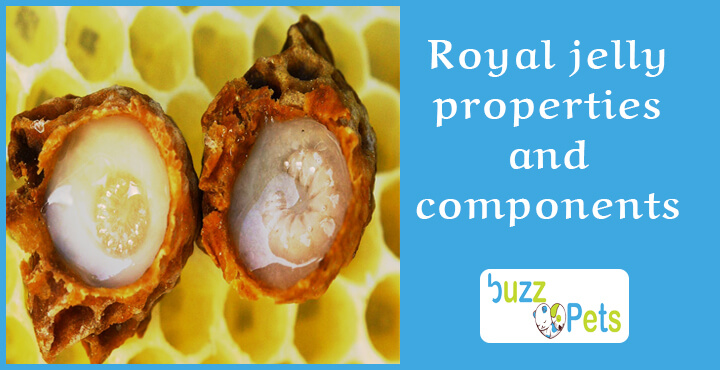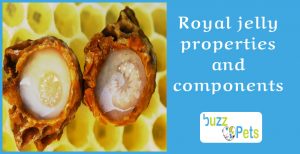Royal jelly is the most fascinating product of all those obtained from the hive. Known for several centuries, this substance still fascinates researchers due to its complexity. It is a thick, viscous, whitish fluid that bees use to feed their larvae during the first two days of life. But if the larvae are queens, they feed them royal jelly throughout their lives. That difference makes queen bees the physical wonder they are and allows them to live for up to five years, rather than the few weeks a worker lives. She keeps reading and finds out all about royal jelly.
1 – What is royal jelly?
Royal jelly is a viscous substance produced by young bees, the nurses, through the hypopharyngeal gland, located on their head. It is an acidic liquid, with a strong and slightly spicy flavor, which contains a huge amount of nutrients. So many, that it is considered a superfood.
To generate the jelly, the nurses consume pollen and, after processing their proteins together with enzymes and other substances, they secrete the jelly with which they feed the larvae.
In the case of worker larvae, the jelly is only supplied for two days, and is mixed with some pollen. However, if the larva is destined to be a queen bee, royal jelly is offered throughout its development and subsequently throughout its life.
Each nurse worker produces royal jelly between the fifth and the fifteenth day of life, approximately. However, at the end of winter, when there are hardly any young bees in the hive.
2. How do you get royal jelly?
The worker cells contain very little jelly, just a few drops. However, in the large queen cells, the nurses shed an appreciable amount, which can be harvested.
To harvest jelly, beekeepers force the production of queen bees. To do this, they overstimulate the hives with artificial feeding. Later, they orphansize them, which awakens in the workers the instinct to produce new queens. In addition, the open brood – young larvae – is removed to prevent queens from being produced in the combs.
Once orphaned and without the possibility of stretching real cells from their own larvae, the hives are supplied with a series of domed slats in which larvae of less than three days from other hives will have been implanted. Immediately, queenless hives adopt these larvae, generating royal cells that fill with jelly.
When the cells have enough royal mush, they are harvested and the jelly is aspirated with a pneumatic device or removed with a spatula. Immediately, it is stored in jars that are hermetically closed and protected from the sun and heat. So that it does not lose properties, it must be kept cold.
The jelly, once harvested, is ready to be consumed. It can be taken alone and fresh. In this case, the recommended daily dose is to take a portion the size of a lentil. And they can also be found in many preparations, even mixed with other substances, such as ginsen or vitamin C.
3. Properties of royal jelly
Royal jelly is a substance with enormous chemical complexity. Although 60 percent of its weight is water, the other 40 percent contains sugars, lipids and, above all, proteins. Notable among these is the presence of royolactin, the protein responsible for making the queen fed with royal jelly develop.
Besides protein, royal jelly contains a good amount of vitamins: B1, B2, B5, B6 and B8, vitamins C, D, E and PP. And it is also rich in folic acid, lipoproteins, hormones, enzymes and minerals such as iron, manganese, cacium, sodium, potassium, sulfur, aluminum, magnesium, silicon, copper or phosphorus.
Lastly, it is known to contain the 20 essential amino acids: arginine, valine, histidine, insoleucine, leucine, lysine, methionine, threonine, tryptophan, phenylalanine, proline, aspartic acid, serine, glutamic acid, glycine, alanine, cystine, and tyrosine.
With these ingredients, the jelly of the queens is shown as one of the most concentrated foods that are known, which is why it is considered a superfood and is recommended as reinvigorating, in addition to being effective in a good number of ailments and deficiency states.
4- Benefits of royal jelly
In addition to being a remarkable energy supply, royal jelly has many other beneficial effects for the body. Among the most recognized, it is worth highlighting:
Improves the activity of the adrenal glands.
It reinforces sexual activity.
It stimulates the growth of cellular tissue, especially the epithelial.
Rejuvenates the skin and protects it against aging.
It has antibacterial and antiviral properties. It is a natural antibiotic.
It improves the tension of the hypotensive without affecting that of the hypertensive.


